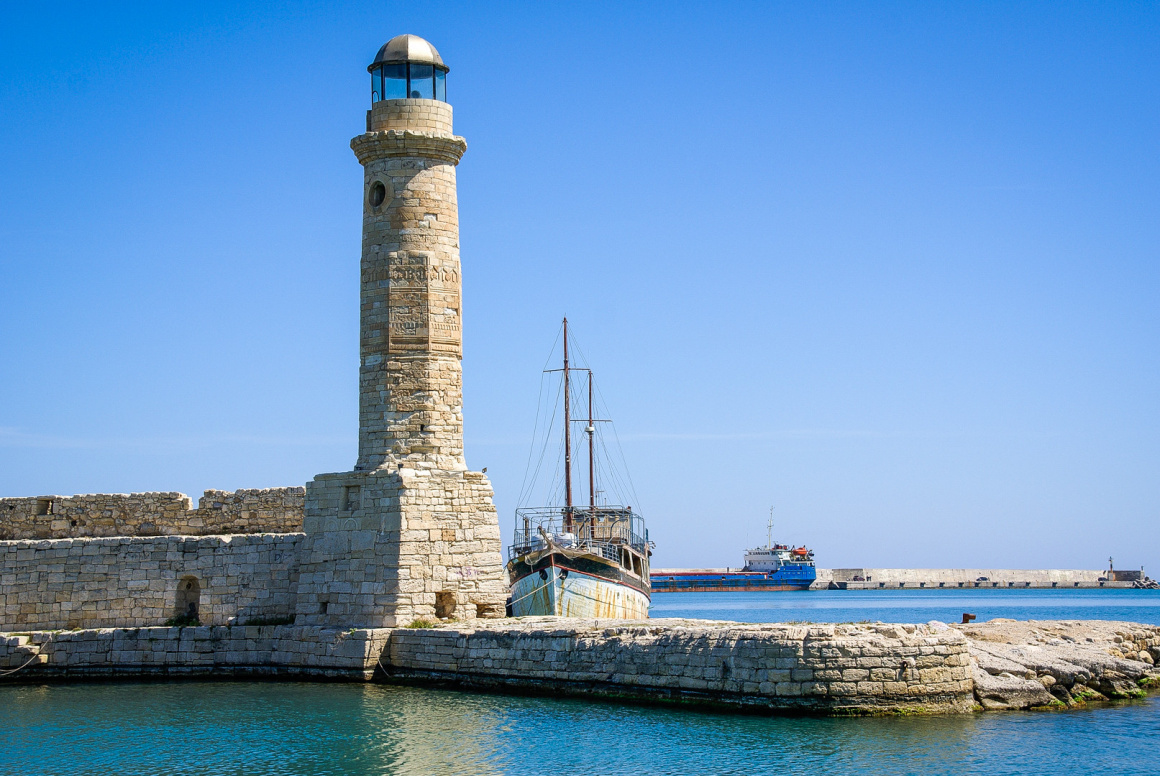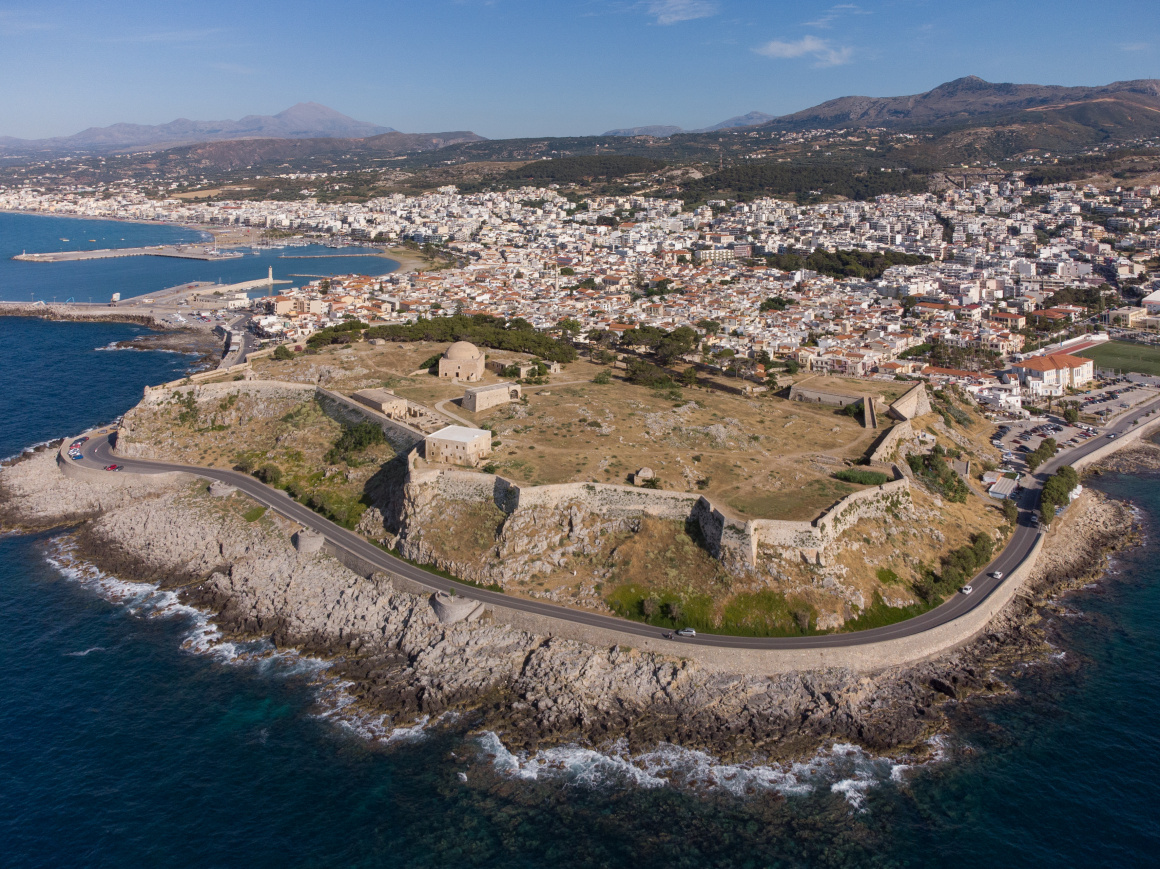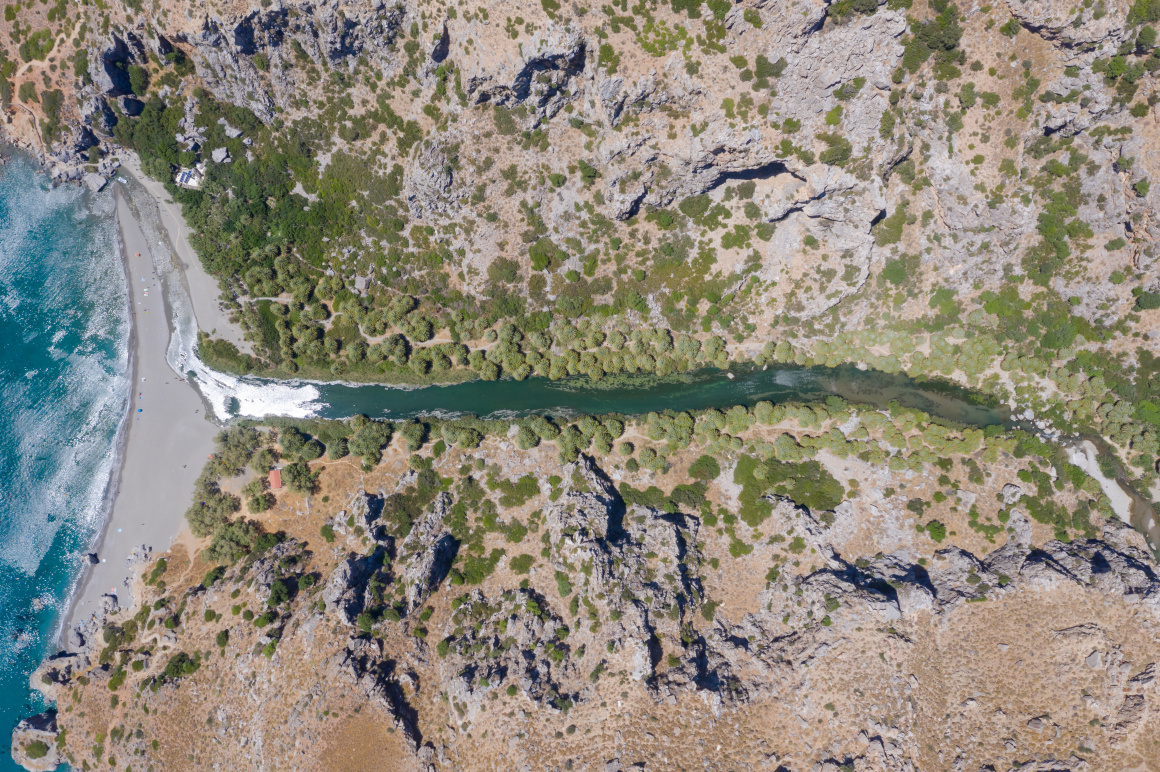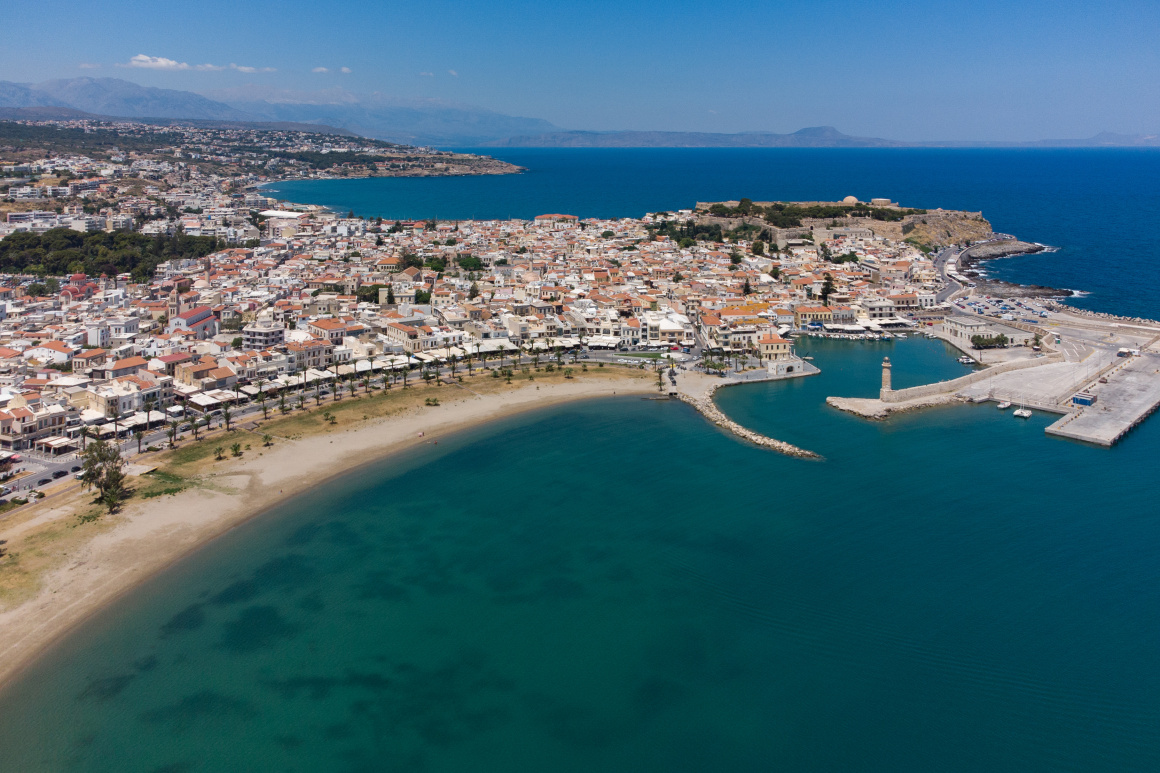Rethymno Prefecture: Venetian Romance and Rugged Hinterlands
Rethymno's iconic Egyptian Lighthouse stands guard at the old harbour, as the pastel-hued buildings of the Old Town and the fortress on the hill bask in the rosy glow of dawn. Nestled between its larger neighbors Chania and Heraklion, Rethymno Prefecture is the smallest of Crete's regions, but it packs a punch of charm and variety. The jewel in its crown is Rethymno City, a place where you can feel centuries of history beneath your feet.

 'Crete(Greece)' - Attribution: R9 Studios FL (Thanks to all the fans!!!)
'Crete(Greece)' - Attribution: R9 Studios FL (Thanks to all the fans!!!)Wander the Old Town of Rethymno, and you'll meander through a labyrinth of cobbled alleys lined with Venetian mansions, ornate doorways, and Ottoman-era minarets. There's an almost cinematic romance to it, bougainvillea drapes over wooden balconies, artists sell paintings in little squares, and every so often you stumble upon a historic gem like the Rimondi Fountain or the arched Guora Gate from the old city walls. Overlooking it all is the massive Fortezza – Rethymno's 16th-century Venetian fortress. Climb its ramparts for panoramic views of the city and the sea, at sunset, the town and harbour below glow with golden light.

 'This is a photo of a monument in Greece identified by the ID' - Attribution: C messier
'This is a photo of a monument in Greece identified by the ID' - Attribution: C messierRethymno's vibe is youthful and artsy (it's a university town), blending traditional cafés and workshops with a lively nightlife and cultural festivals – the Renaissance Festival each summer showcases theatre and music in historical settings. But beyond the city, Rethymno Prefecture unfolds into lush valleys, high mountains, and secluded beaches. The towering Mount Psiloritis (Ida) – Crete's highest peak at 2,456 m – dominates the eastern part of the region. Its slopes are sprinkled with quaint villages like Anogia and Spili, known for their weaving and carved fountains, respectively.

 'Panorama from Mount Psiloritis (Timios Stavros peak), Crete, Greece, to the south. In the middle: Tympaki town and Messara Gulf. On the right: Mount Kentros (Kedros).' - Attribution: Tomisti
'Panorama from Mount Psiloritis (Timios Stavros peak), Crete, Greece, to the south. In the middle: Tympaki town and Messara Gulf. On the right: Mount Kentros (Kedros).' - Attribution: TomistiIn the foothills you'll find sacred caves (legend says Zeus himself was raised in an Idaean cave here) and famous monasteries such as Arkadi Monastery, a symbol of Cretan resistance with a moving history from the Ottoman era. Drive south through the Kourtaliotiko Gorge (pull over to feel the powerful wind rushing through and see the chapel wedged in the rocks), and suddenly you emerge at the Libyan Sea, where palm-lined Preveli Beach awaits at the mouth of a river, and laid-back coastal hamlets like Plakias invite you to slow down.

 'Top down aerial of the river Kissano Faraggi in Kourtaliotiko Gorge on Crete, Greece' - Attribution: dronepicr
'Top down aerial of the river Kissano Faraggi in Kourtaliotiko Gorge on Crete, Greece' - Attribution: dronepicrRethymno Prefecture is also rich in agricultural bounty – olive groves, vineyards, and orange orchards carpet the landscape. Don't miss tasting the local graviera cheese or honey, often sold at roadside stands in the Amari valley. In many ways, Rethymno offers a microcosm of Crete, a vibrant historic town, traditional villages where life revolves around the kafeneio, high mountains with shepherds and eagles, fertile plains, and hidden beaches where you might be the only person for miles. It's the kind of place where you can tailor your trip to be as relaxing or as adventurous as you wish.
Rethymno's Seasonal Splendour
Rethymno Prefecture's central position gives it a mild climate year-round, though the mountains see cooler temperatures. Here's what to expect:
Summer
Summer is glorious and busy. Rethymno City thrives in July–August, the long sandy city beach (spanning 12 km eastwards) is lined with sunbeds and the waterfront restaurants are abuzz every evening. Summer is beach time, and besides the city beach, hotspots like Bali (a series of coves) or Agia Galini in the south draw crowds. If the heat in the city gets intense (34°C midday in August is common), an escape to the mountains provides relief – up in Anogia or the Amari valley, it can be several degrees cooler. Outdoor activities like gorge hiking (e.g., Prassano Gorge or smaller walks) are best done early in the morning. One highlight of summer is the Rethymno Wine Festival and various village panigiria – you might find yourself dancing a sousta under the stars in a village plateia with locals.
Autumn
Autumn in Rethymno (September–October) is fantastic. The sea remains warm (often until early November) and the weather is stable, with cooler nights. September still sees many visitors, but by October, there's a gentle calm. This is olive harvest time (late Oct into Nov), driving through the countryside you'll see families laying out nets under silvery-green trees to collect olives. It's also the season for tsikoudia (raki) distillation. If you befriend locals, you might get invited to a raki-making celebration at a traditional kazani, an experience of robust spirits, grilled meats, and Cretan music.
Winter
Winter (Nov–Feb) is the quietest period. Rethymno City's Old Town never fully goes to sleep (students keep it lively, and shops stay open for locals), but tourism is at a trickle. Many beach tavernas and hotels close. Winter days can be crisp and clear, perfect for exploring archaeological sites like Eleftherna or doing village hops without tourists around. Snow occasionally falls on the highest villages and definitely on Psiloritis (sometimes locals ski or snowboard up there!). The seaside, though windy at times, has its own beauty in winter; you can have a long stretch of beach entirely to yourself. Cultural life continues with local theatre, music in bars, and of course, in late winter Carnival season hits – Rethymno hosts one of Greece's largest Carnival parades before Lent, a riotous affair of costumes and floats that's worth planning a trip for if you enjoy festivities.
Spring
Spring (March–May) is a time of renewal. By late March wildflowers blanket the hills, and the almond blossoms have already come and gone (they bloom as early as January). Easter (movable but often in April) is huge here – attending a midnight Easter service at Arkadi Monastery or in a village church with candles lighting the darkness is unforgettable. By May, temperatures are in the 20s °C, wildflowers are still out in force, and the sea starts welcoming swimmers (albeit briskly). This is the season to tackle hikes like Mili Gorge (just outside Rethymno) or even attempt summiting Psiloritis (for seasoned hikers, before any snow lingers). Everything is green and smells of fresh oregano and thyme. Many resorts and restaurants reopen by May, gearing up for summer, so you get the best of both worlds – most facilities available but without the crowds. In essence, Rethymno Prefecture is a year-round destination. If you want pure beach and buzz, go in summer; if you want culture, nature, and a mix of mild weather, spring or fall are ideal; and if you're curious about local life and don't mind some cooler days, winter has its own gentle allure.
Where to Stay in Rethymno Prefecture
From historic boutique hotels to countryside villas and beach resorts, Rethymno has lodging to suit every style:
Rimondi Boutique Hotels, Rethymno Old Town: Nestled in the heart of the Old Town, Rimondi is actually two complexes (Palazzo Rimondi and Rimondi Estate) that offer a luxurious boutique stay. With elegant courtyards, small pools, and rooms blending Venetian stone architecture with modern plush decor, it's a top choice for couples seeking romance and history. Step outside and you're moments away from cafés, galleries, and the ambience of the old city.
Avli Lounge Apartments, Rethymno: A unique boutique stay comprising beautifully styled suites above one of Rethymno's best-known restaurants, Avli. The suites are lavish, with four-poster beds, jacuzzi tubs, and eclectic decor mixing antiques and bold colours. The real treat is downstairs - Avli's restaurant/wine bar in a flower-filled courtyard, where guests often indulge in gourmet Cretan cuisine and an extensive local wine list. It's an immersive experience of Rethymno's culinary and hospitality excellence.
Caramel, A Grecotel Resort to Live, Adelianos Kampos: Located on a long beach just east of Rethymno City, this upscale resort by Grecotel offers a chic, retro-glam escape. It's known for its stylish suites and villas (some with private pools), immaculate gardens, and a gorgeous pool area. With its beachfront location, you can alternate between sea and pool with ease. They also organise unique experiences like olive oil tastings and Greek cooking lessons for guests, blending luxury with local culture.
Plakias Suites: On the south coast in Plakias, Plakias Suites offers modern, stylish self-catering apartments right by the less-crowded end of Plakias Beach. It's run by a friendly local couple who pay great attention to detail, from orthopaedic mattresses to beach gear for guests. Step out and the Libyan Sea is at your feet. This spot is ideal if you want a balance between independence and having a comfortable base with beach access, plus, you can easily wander to nearby tavernas or drive to other south coast beaches.
Dalabelos Estate, Angeliana: A wonderful agritourism option halfway between Rethymno and Heraklion, Dalabelos is a peaceful farm stay on a hillside. Accommodation is in stone-built cottages with rustic elegance. The estate produces olive oil, wine, and even hosts occasional traditional music nights. It's a chance to stay on a working organic farm – take part in baking bread in a wood oven, walk among orchards, or maybe join a yoga session at sunrise. The on-site restaurant serves organic farm-to-table meals. Dalabelos makes a great base to explore both Rethymno and nearby sights like Margarites pottery village or Eleftherna ruins, while returning to country serenity each night.
Getting Around Rethymno Prefecture
Navigating Rethymno is generally straightforward, given its central location on the island:
By Car
If you have a car, Rethymno Prefecture opens up easily. The main E75 highway runs along the north, so places like Panormos, Skaleta, and into Rethymno City are easily reached. For the south, you'll take one of several cross-island roads – for example, the road through Spili to Agia Galini, or through Kourtaliotiko Gorge to Plakias. Roads to the south are winding but well-paved. A car gives you the freedom to stop at points of interest en route, like the Frangokastello castle if you venture to the far south-west or the overlook above Preveli Palm Beach on the way to Plakias. In Rethymno City, parking in the Old Town is limited – look for municipal parking lots on the waterfront or near the city park. If staying in the Old Town, you'll likely park on the outskirts and walk in (hotels can guide you to the nearest lot). Driving in the Amari valley or mountain areas is a delight in spring or summer, with empty roads and scenic vistas – just be mindful of occasional goats on the road!
By Bus
Rethymno's KTEL bus network is quite good. There are frequent buses to Heraklion (about 1h20m) and Chania (1h). Within the prefecture, buses go to Plakias (via the Kourtaliotiko Gorge) a few times a day, to Sfakia (Chora Sfakion) via Vrysses daily, to Agia Galini and Timbaki in the south, and to various villages like Anogia, Axos, Margarites, etc, though some of those are only once or twice a day. There's also a local bus that loops through the Amari valley villages a couple of times a week (market days, etc.). The bus station in Rethymno is just west of the Old Town, walkable from the centre. Using buses you can certainly reach most key sights, for example, Arkadi Monastery via bus to Patsos junction plus a short taxi; Preveli Palm Beach via bus to Preveli Monastery then hiking down. It may require some creativity and checking schedules. In summer, extra routes are often added to beach spots. If you're without a car and want to explore, consider joining organised excursions – plenty of tour companies in Rethymno offer day trips to Samaria Gorge, Balos Gramvousa (via transfer to Chania), Knossos Minoan Palace (via Heraklion), and local excursions to places like Arkadi, Eleftherna, or Margarites combined.
By Taxi
Taxis are readily available in Rethymno City – the main ranks are by Plateia Tessaron Martiron (Four Martyrs Square) and along the seafront road. They can be hailed or phoned. Taxis are metred in town; for longer intercity trips, a fixed rate can usually be negotiated. As an idea, a taxi from Rethymno to Heraklion Airport (about 80 km) might be approximately €80-€100. For short trips, like from Rethymno to a nearby beach (for example, Episkopi Beach or Georgioupolis), it's a viable option if buses don't align with your schedule. Also, many travellers use taxis to reach trailheads or remote sites and arrange a pickup later (for example, a taxi to the top of Mili Gorge to hike down, then bus or taxi back to town). Taxi drivers in Crete are often friendly and full of good local tips – don't hesitate to ask for recommendations or a bit of history, they're proud of their region.
By Boat
Rethymno has a port that sees daily summer ferries to Santorini and some Cycladic islands (these are high-speed catamarans catering to island-hoppers). Unlike Chania or Heraklion, there's currently no regular car ferry from Rethymno to mainland Greece. However, Rethymno's port is used for some cruise ships and also by excursion boats. One popular boat trip is the pirate ship cruise (a fun thematic boat) that does a short voyage along the coast – nice for families. Another is a day cruise to Gramvousa/Balos that sometimes operates from Rethymno (sparing you the drive to Kissamos, as the boat will bus you to Kissamos port then sail). Along the south coast of Rethymno, small boats (often run by locals) can ferry you between Plakias and Preveli Beach in summer, or to tiny beaches like Damnoni, saving you a hike. If you find yourself in Agia Galini, boats from there do excursions along the south coast to Matala or little islands.
On Foot/Bicycle
Within Rethymno City, walking is the best way to get around – the Old Town and Fortezza are pedestrian-friendly (indeed, many alleys are pedestrian-only). Bicycles can be a pleasant way to explore the flatter parts of the region; you can rent bikes in Rethymno City. There's a lovely paved beachfront promenade that stretches miles east from the city – great for cycling or jogging in the morning. Some adventurous cyclists enjoy the route from Rethymno to Arkadi Monastery, though it's hilly. Additionally, Rethymno City started a public bike sharing programme, and there are some bike lanes in town.
Rethymno's central location makes it an excellent hub. If you base yourself in Rethymno City, you can do day trips west to Chania (even by bus) or east to Heraklion/Knossos and return for dinner in the same familiar tavern you like. If you base in the south, like Plakias or Agia Galini, you can similarly day-trip to the city or to different beaches. The key is to plan according to your interests: history buffs might focus on the north and inland (villages, ruins, monasteries), while beach-seekers split time between north sandy beaches and south secluded coves. In Rethymno Prefecture, distances are not huge – it's perhaps 1.5 hours' drive from the north coast to the far south – but the experiences differ greatly. Enjoy the contrasts!
Being in the centre of Crete, Rethymno offers easy forays into adjacent regions. Heading east, the borders of Heraklion Prefecture are close – you might spend a day visiting Matala's hippie caves or the vineyards of Heraklion's wine country. To the west, Chania Prefecture beckons, with the town of Chania just an hour's drive if you fancy a dinner by its harbour. Rethymno is your crossroads to all Crete has to offer, while itself being a destination that steals hearts.
To find your dream hotels in Crete and around the world, we’ve created Travelmyth, the innovative hotel search engine with a wide range of category filters. Whether you’re looking for hotels with spa in Manchester or hotels with rooftop pool in Austin, Travelmyth will help you find the best hotels that match your interests and preferences.



